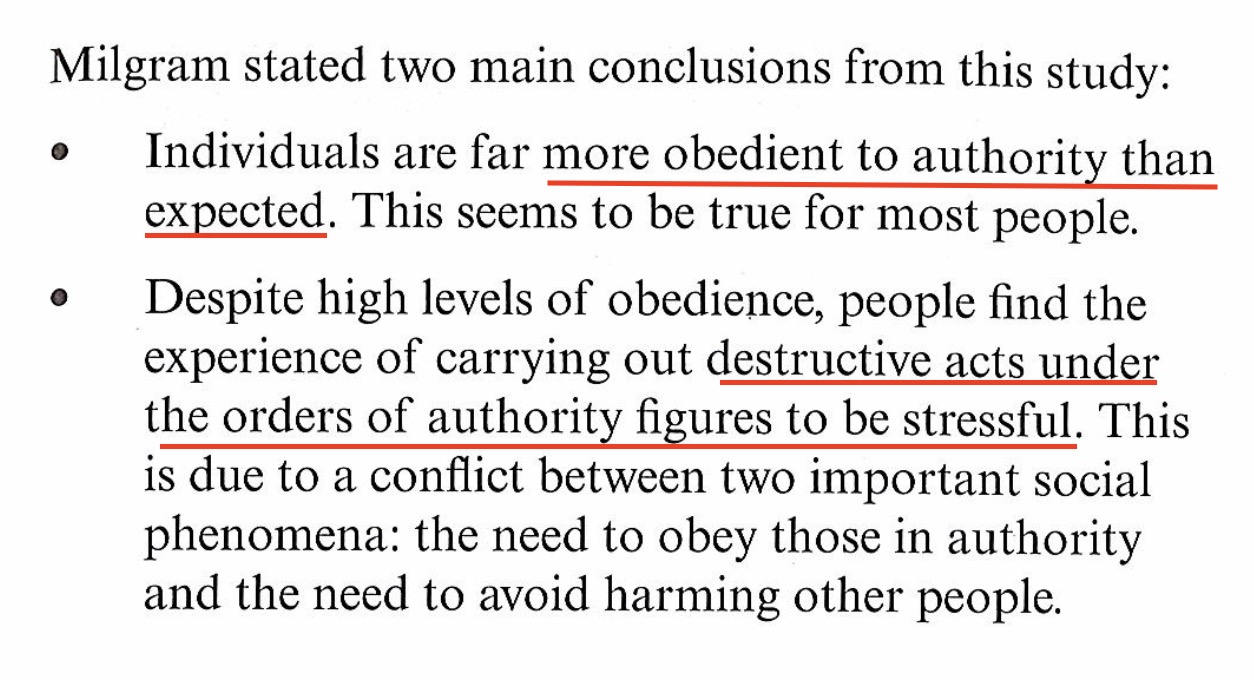Miligram , obedience
1/19
There's no tags or description
Looks like no tags are added yet.
Name | Mastery | Learn | Test | Matching | Spaced |
|---|
No study sessions yet.
20 Terms
Aim
To investigate how obident people are when an authority figure orders them to physically harm another person
Research method and design
Laboratory Experimet
Yale University, in a modern laboratory ( made procedure seem legitimate, animportant situational factor in obedience.)
Iv & DV
No IV
DV: (Observation through 1 way mirror)
the maximum voltage given in response to the orders.
participants' body language, any verbal comments or protests made throughout the procedure.
Sample
volunteer sample
newspaper advertisement
40 men
aged bwteen 20-50 years
New Haven, USA.
range of different backgrounds and occupations
$4.50 for taking part
Deception
were told that the study was about memory and punishment.
Both men were told that they would be allocated the roles of 'teacher' or 'learner'. (but it was fixed so that the real participant was always allocated the role of teacher)
The participant was told that although the shocks were painful, they were not dangerous.
About Shocks
15 V to 450 V
ordered to increase the level of shock each time by 15 V for each error the learner made.
Until 300 V were reached, the learner had remained silent when receiving the punishment.
The procedure was considered to be complete when theparticipant refused to give any more shocks, or when they had given the maximum 450 V available.
Prods
(Remember in sequence )
Please go on / Please continue
requires that you continue
It is absolutely essential that you continue
You have no other choice, you must go on.
Results

Debriefing
each participant was interviewed
participants were asked to estimate how painful they thought the final 450 V shock was, on a scale of 0-14 ('not at all painful' to 'extremely painful').
mean estimate was 13.42 out of a maximum 14
the deception was fully explained to them.
meet the learner again, in order to reassure them that the learner was uninjured.
Explanation for obedience:
situational Explanation for obedience:
perceived legitimacy of the study; the professional academic environment of the study
use of uniform by the experimenter ( a grey technician's coat)
participants had been paid to participate so they felt obliged to continue.
Participants also believed that both they and the learner had freely volunteered to participate.
Conclusion

Strenghts
Controlled observation
standardised Procudure (Prods)
validity (example shock given to participants)
Weakness
Low ecological Validity (Laborartory )
Low generalisaibilty (all men)
quantitative data, objectivity (the voltage of shocks delivered)
qualitative data ( participants' physical and verbal behaviour as they administered the shock.)
Ethical Issues
not protected from psychological harm ( distressed by their own behaviour)
repeatedly deceived
participants had consented to take part in the research, they did not give their informed consent.
Application to everyday life
Nature VS. Nuture
Individual Vs. Situational
Psychology being investigated
Background
Why In Social approach ?